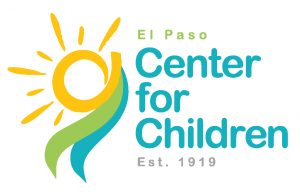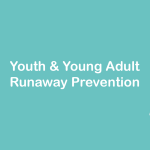SIDS Awareness Month
Written by Mel Gutierrez, BSN, RN
A new baby is a time for joy. Sadly, this happiness is not a shield from tragedy. About 3,400 babies in the United States die suddenly and unexpectedly each year1. When there is no clear cause of death after an investigation, the death is attributed to sudden infant death syndrome or SIDS. October is SIDS awareness month. SIDS is most common between one and four months of age2. In Texas, 87.7 out of 100,000 babies born die from SIDS1.
Nobody knows what causes SIDS, but it can be prevented2. We can take steps to prevent SIDS before a baby is born, ensure that they are safe when they sleep, and help them while they’re awake to prevent SIDS.
Preventing SIDS Before a Baby is Born
A baby’s journey to a healthy life starts when its mother finds out she is pregnant. One of the first calls a new mother should make is to her doctor to start prenatal care. Babies who had regular prenatal care are less likely to die of SIDS2. There are resources to help uninsured pregnant women get care. Medicaid is available during pregnancy and two months after delivery if income requirements are met in Texas. To check eligibility, dial 211 to speak to somebody to help navigate the system3.
In addition to regular prenatal care, pregnant women must avoid smoking, which increases SIDS risk2. Pregnant women in Texas can contact Yes Quit for free resources to stop smoking. It is also important to avoid secondhand smoke.
Drinking alcohol and using illegal drugs or marijuana during pregnancy also increases the risk of SIDS2. Often, when people struggle with using any of these substances, there are problems going on in their lives. The El Paso Center for Children offers expecting and current parents behavioral health services to address mental health. The Center also has many other support programs. More information can be found on the Early Childhood Center | Programs for Children and Youth page, or they can be reached by email at elpasohopes@epccinc.org or by phone at 915.500.4105.
Finally, breastfed babies have a lower risk of SIDS than babies fed formula2. The best time to start learning about breastfeeding and how to breastfeed successfully is during pregnancy. There are many great resources to learn more about breastfeeding. Good places to start include prenatal care providers or lactation support centers.
Safe Sleep for Babies
Every time a baby sleeps is an opportunity to keep them safe. Babies who sleep on their backs are less susceptible to SIDS than those who sleep on their stomachs or sides2. They should also always sleep alone. Adults or pets sharing a bed may accidentally roll over the baby and suffocate them.
Babies should sleep in a crib, bassinet, portable crib, or play yard that meets federal safety standards. You can check here to ensure a baby’s sleep surface is safe, especially if it is not new2. The El Paso Center for Children’s HOPES program at elpasohopes@epccinc.org or by phone at 915.500.4105 can help families find safe sleep surfaces.
The American Academy of Pediatrics also recommends not having infants sleep on inclined surfaces. This includes wedges and sleep positioners marketed for GERD and acid reflux. Do not have babies sleep at an incline unless a baby’s healthcare provider prescribes them explicitly.
Avoid infant swings and car seats for bedtime and naps. If a baby falls asleep on one of these surfaces, carefully move them to their safe sleep surface as soon as possible.
Finally, a baby’s sleep area should also follow other safety guidelines.
- For the first six months, babies should room share with their primary caregivers.
- The only thing in a baby’s crib should be a fitted sheet. If desired, babies can use wearable blankets.
- While decorating a crib with cute bumpers, pillows, and stuffed animals may be tempting, these are a suffocation risk. Save cute decorations for areas where babies are awake.
- Do not smoke or vape where babies sleep
- Offer a baby a pacifier at night. If a baby is breastfeeding only, it may be helpful to delay offering a pacifier until breastfeeding is well established.
- Not all babies like pacifiers. Babies do not need to use a pacifier to be safe while sleeping.
- Many babies like to be swaddled, but it does not reduce SIDS risk. Stop swaddling at approximately 3 months of age or when the baby is rolling on its own4.
A baby should only be wearing one more layer of clothing than adults. Once a baby has left the hospital, they do not need to wear hats indoors. No headbands should be worn when a baby is not supervised, as they can slide over their mouths and suffocate them. Signs of babies overheating include:
- flushed or red skin
- fussiness or restless
- Sluggishness
- Wet hair or skin from sweating- however, it is possible for a baby to overheat and not be sweaty
Preventing SIDS when Baby is Awake
As soon as the baby comes home from the hospital, it is time to start tummy time. Tummy time is very important for babies to strengthen their necks and core, which can help babies move if something is covering their faces. This can prevent strangulation. Tummy time can be started by doing it for a few minutes a day, with a goal of 15-30 minutes a day total by the time a baby is seven weeks old4. This does not need to be done all at once.
A lot of babies are fussy when first doing tummy time. You can start by having the baby do tummy time on an adult’s chest. The adult should lay flat on their back, and the infant should be placed on their chest, tummy down. This is also a great chance to bond with the baby with skin-to-skin time. For skin-to-skin time, the adult should be shirtless, and the baby only wearing a diaper. Over time, the baby can gradually move to a flat surface with a toy to keep engaged.
Well-baby checks also reduce SIDS risk3. The American Academy of Pediatrics recommends that babies be seen at the following times:
- when they are 3-5 days old
- One month old
- Two months old
- Four months old
- Six months old
- Nine months old
- One year old5.
It is important to follow the vaccination schedule that healthcare providers recommend. SIDS is not associated with vaccinations1.
Final Thoughts
While SIDS rates have declined since 1990, there is still work to ensure that all babies are protected from passing away from SIDS. New babies bring joy to their families, but it is also difficult for the family unit. There are many new things to learn, and it can be hard to know what to do to give the new life the best chance for success.
The El Paso Center for Children has several programs to help navigate and cherish the time with a new child. This service is available for all parents (or soon-to-be parents) and grandparents who reside in El Paso county. For any specific questions, please reach out to the El Paso Center for Children.
1- Sudden Unexpected Infant Death and Sudden Infant Death Syndrome
2- Safe to Sleep
3-During Your Pregnancy- Department of State Health Services
4- How to Keep Your Sleeping Baby Safe: AAP Policy Explained
5- AAP Schedule of Well-Child Care
The information written comes from my education as a registered nurse and my baccalaureate psychology education. It is only intended for educational purposes. The information written for this blog is not a substitution for professional medical advice or therapy services.





